The U.S. government reveals its National Zero-Emission Freight Corridor Strategy
The U.S. federal government’s National Zero-Emission Freight Corridor Strategy just released has been jointly developed by the Department of Energy and the Department of Transportation as a “whole-of-government” approach. According to the Federal Highway Administration, this Strategy aims to coordinate investments and accelerate the development of battery electric and hydrogen fuel cell freight infrastructure.
As a comprehensive roadmap for zero-emission medium- and heavy-duty vehicle (ZE-MHDV) charging and hydrogen fuelling infrastructure from 2024 to 2040, the National Zero-Emission Freight Corridor Strategy is meant to mobilize market activity around ZE-MHDVs across multiple sectors. Among other things, this is meant to enable federal and state governments to prioritize and align funding, loans and investments.
For the development of the appropriate provision of energy for grids and the production of hydrogen fuel, the energy sector should be able to use the Strategy to “align grid development and fuel production with ZE-MHDV needs.”
The US government has already iterated its goal of achieving at least 30 per cent of newly sold medium and heavy-duty commercial vehicles being emission-free by 2030 and increasing this to 100 per cent by 2040. Now, to facilitate the provision of appropriate charging and refuelling infrastructure for these vehicles, the government has now marked intermodal hubs and heavily used ports from which charging and refuelling freight corridors (“National EV Freight Corridors”) are to be built across the country.
From the starting point of the key hubs, the Strategy is supposed to help stakeholders evaluate where new electricity load and hydrogen needs are likely to develop, to plan the ensuing corridors and, eventually, a comprehensive, nationwide freight infrastructure.
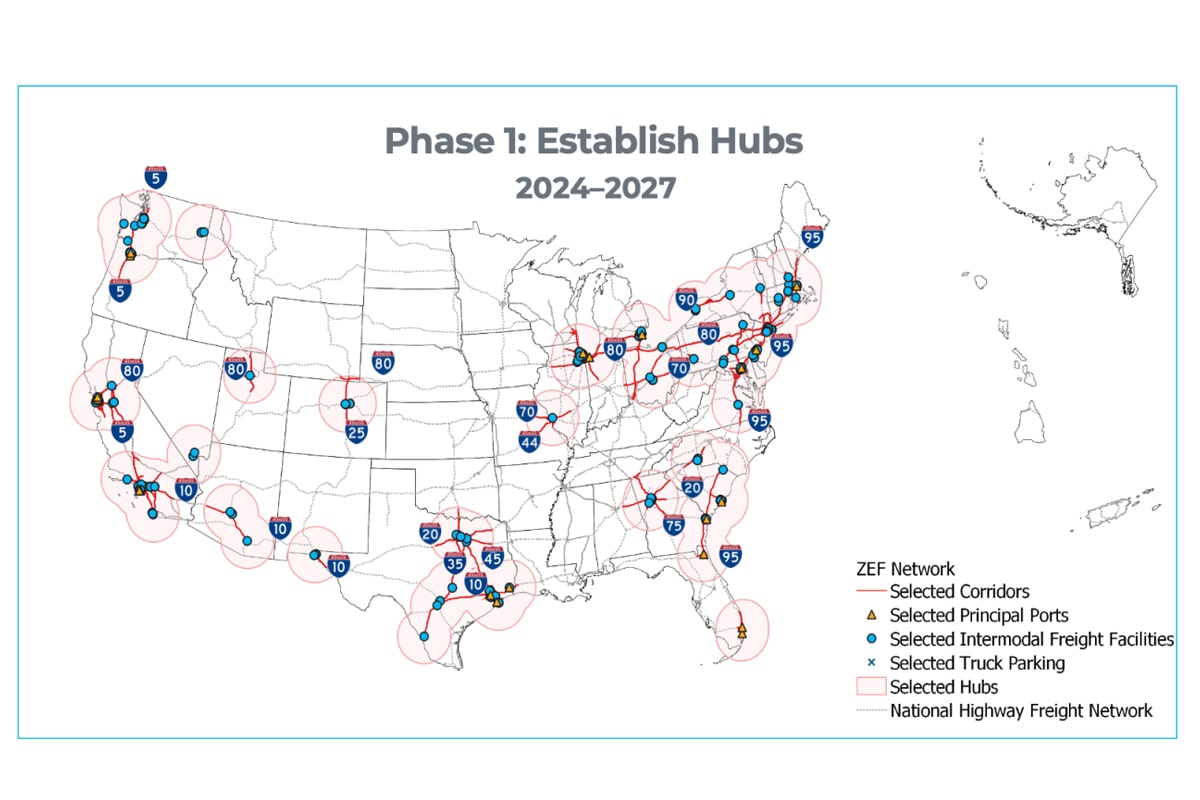
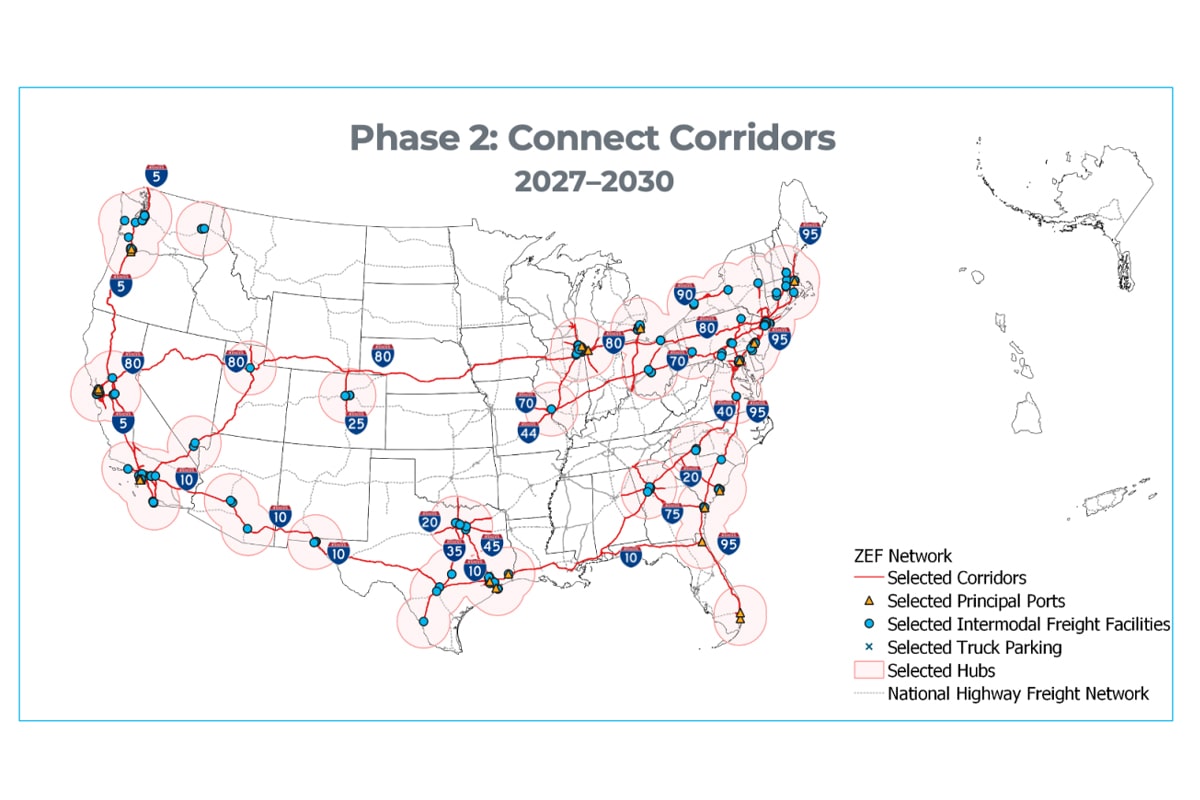
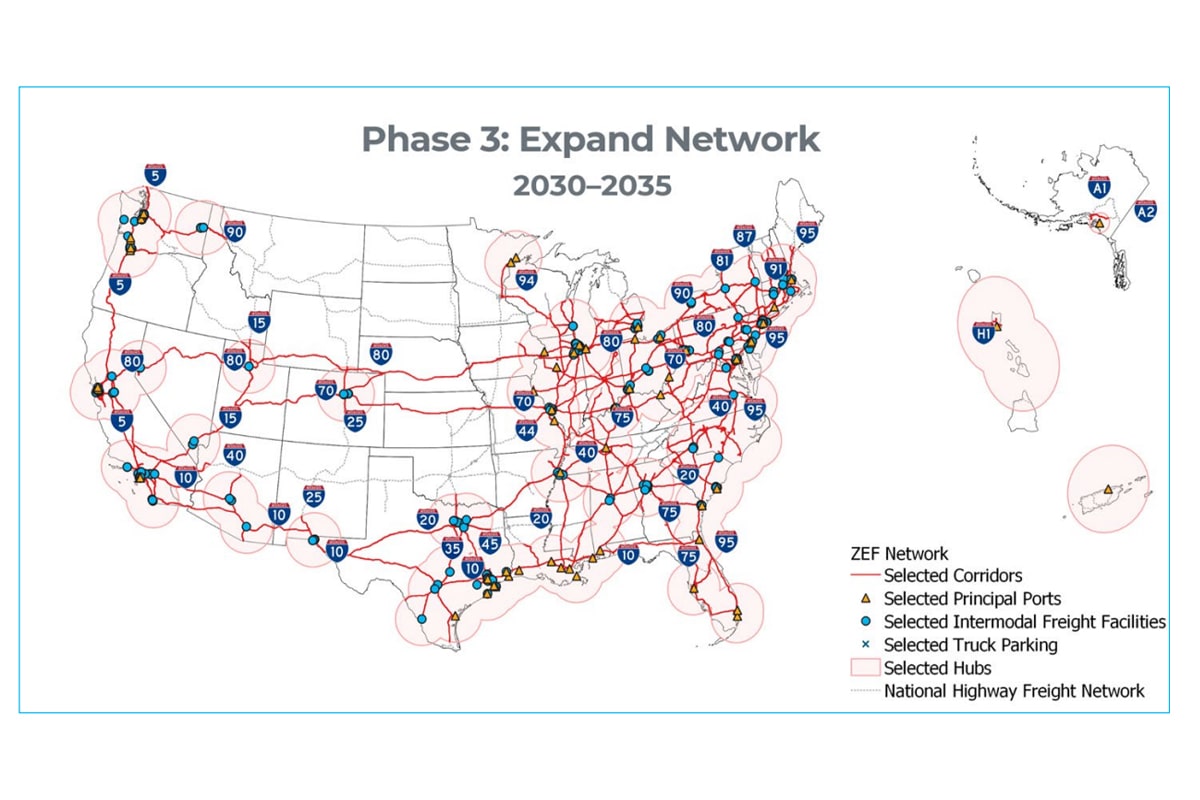
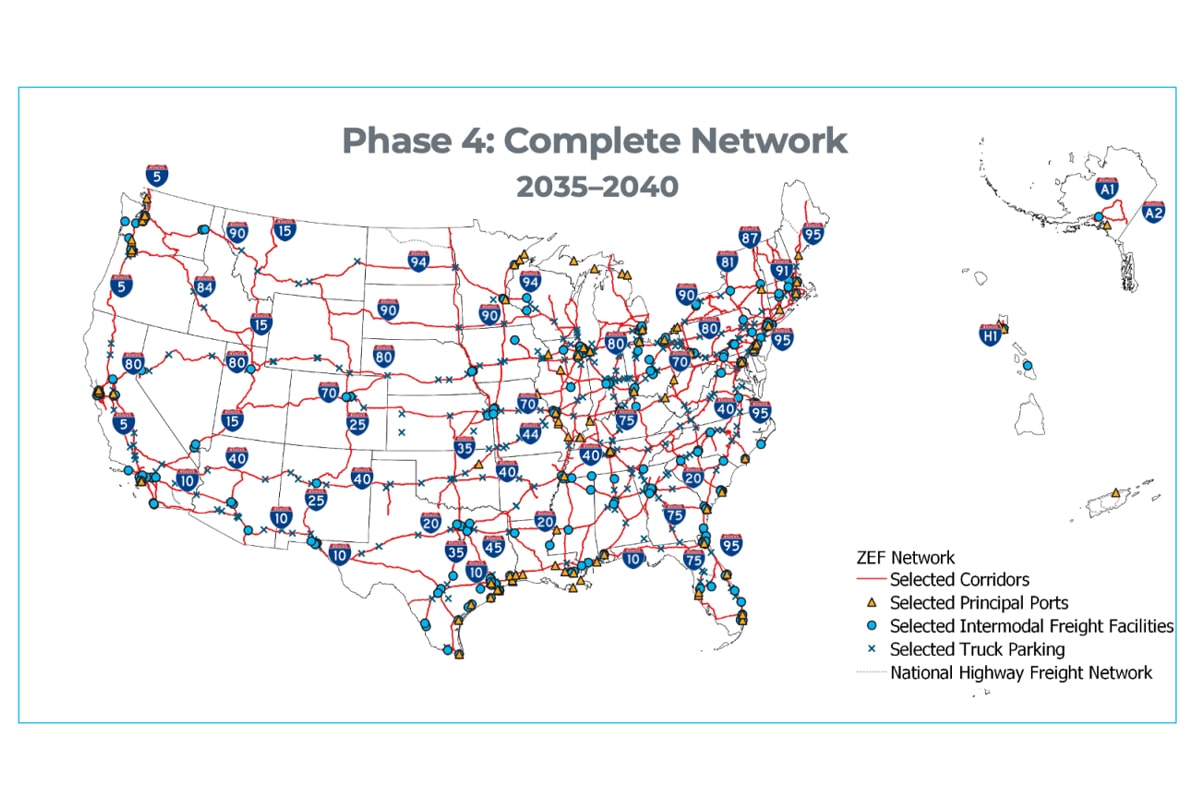
Most of the corridors illustrated are part of the National Highway Freight Network. Statistically, the government document points out that 75 per cent of heavy truck traffic takes place on just 4 per cent of the country’s roads. Along these routes and junctions, the development of electric truck charging and hydrogen refuelling infrastructure will initially be given priority.
“A key objective of the strategy is to meet the freight transport and technology markets where they are today, determine where they are likely to develop next and set an ambitious path that mobilizes action to decarbonize,” the Strategy iterates.
The strategy is divided into four phases up to 2040. Currently (2024 – 2027), priority transport hubs are to be set up based on freight volumes. Between 2027 and 2030, the focus will be on connecting hubs along important freight corridors, followed by the expansion of corridor connections in order to initiate the development of the network (2030-2035) and, finally, further densification through linking regional corridors for nationwide access (2035-2040).
While electricity grids should be strengthened to cope with vehicles that sometimes tap enough energy to run a whole town, hydrogen fuel producers and vehicle manufacturers should be able to use the Strategy to plan production, delivery and market development in “favourable launch areas.”
Mentioned is also the $7 billion investment from the Department of Energy in seven regional clean hydrogen hubs throughout the U.S. The Strategy should then enable the planning of increased hydrogen production capacity to serve key freight corridors between those hubs as they expand across the country.
As an example of cross-sector collaboration, the Strategy makes note of the DOE’s seven commercial ZE-MHDV corridor planning grants. These should involve public, private and community partners working together to evaluate needs, and identify locations for both suitable charging and hydrogen refuelling infrastructure so that deployment plans can catalyse public and private investment for building and expanding charging and refuelling corridors.
Since the rollout of clean infrastructure investment, the Strategy notes: “President Biden’s Investing in America agenda has attracted more than $25 billion of investment in the U.S. EV charging network. Today’s freight corridor designations are expected to crowd in even more investment for EV charging, with a particular focus on the needs of medium- and heavy-duty vehicles.”

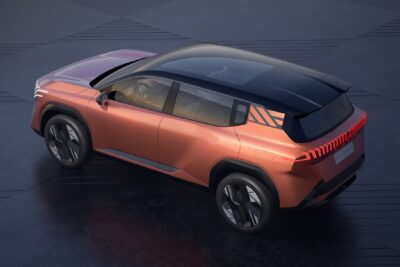

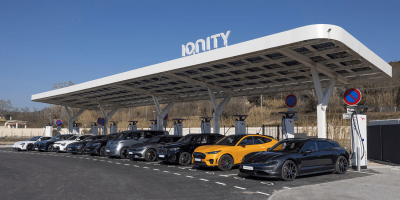
0 Comments